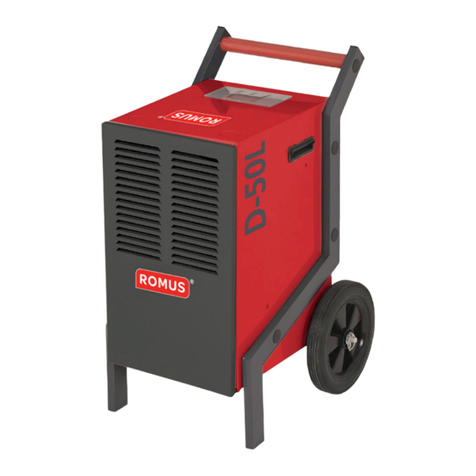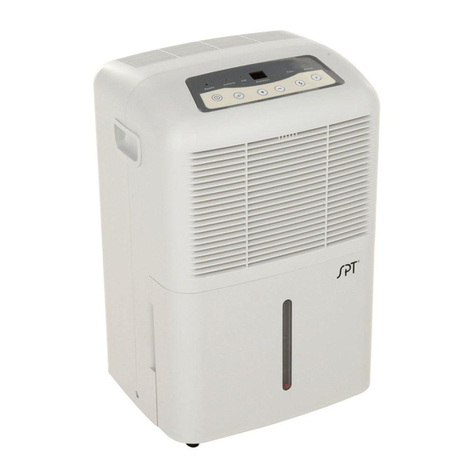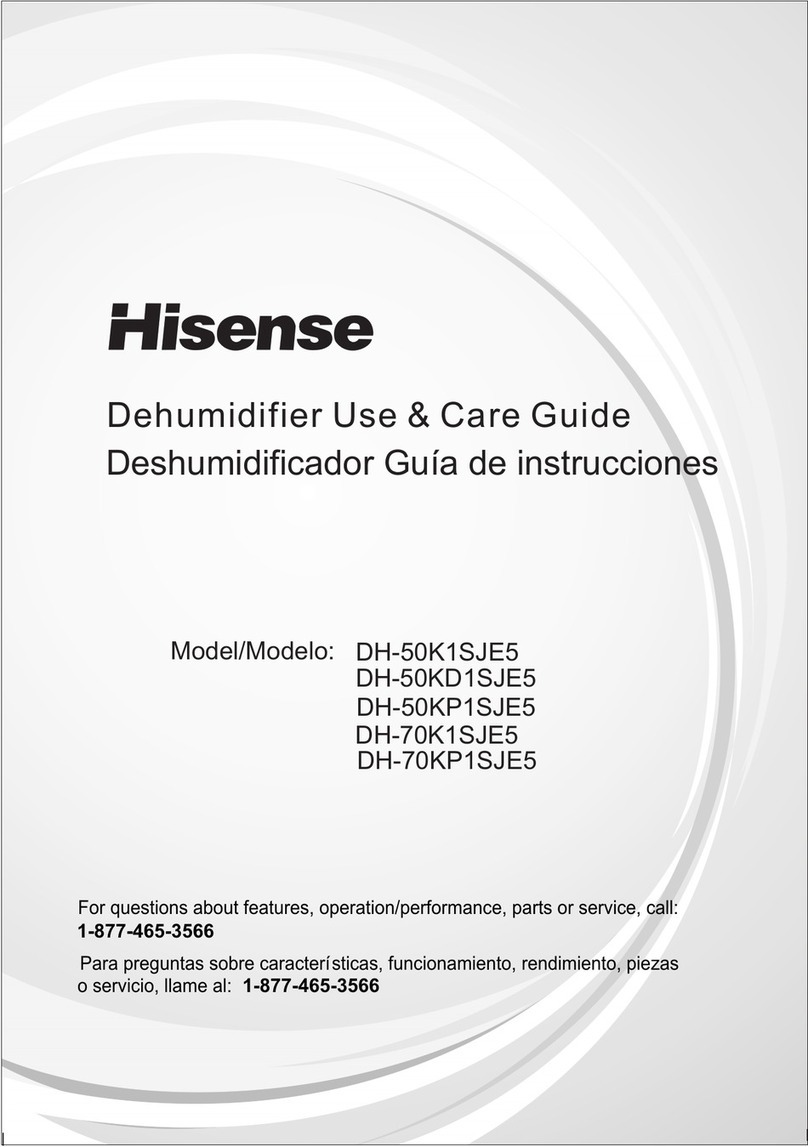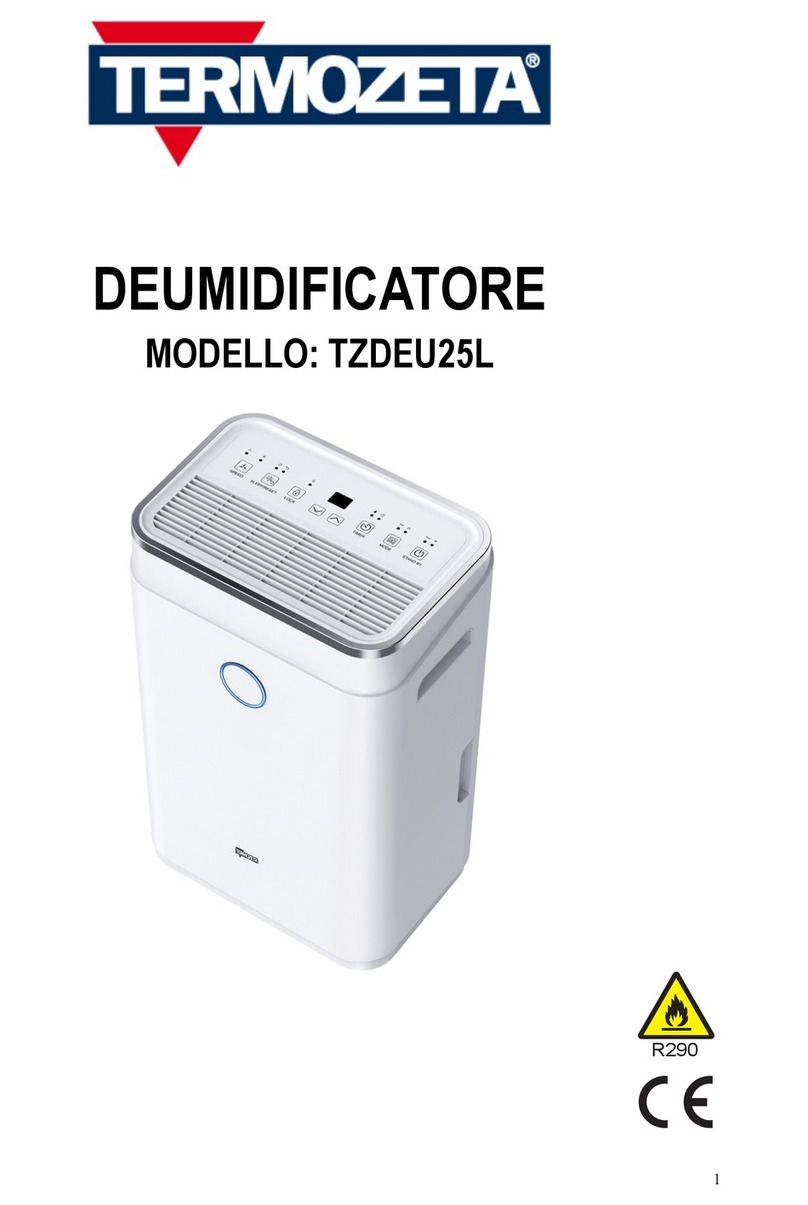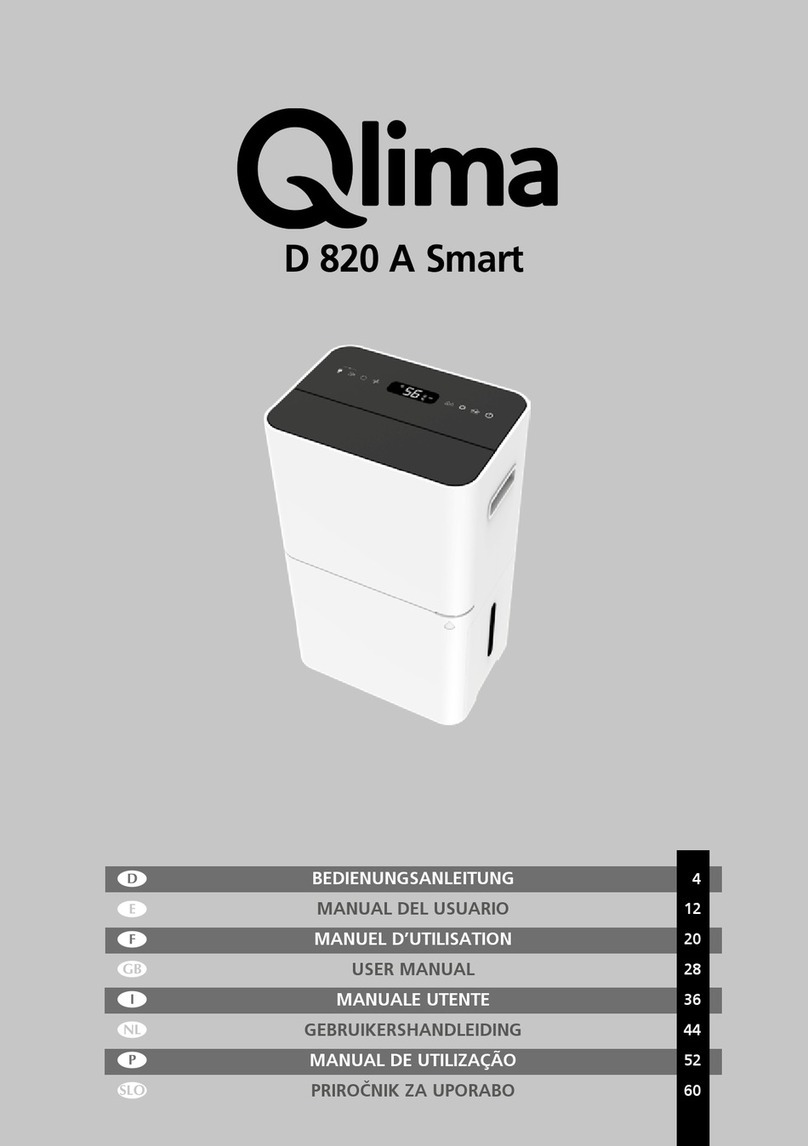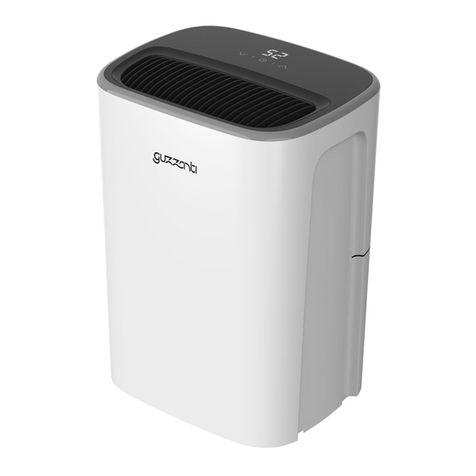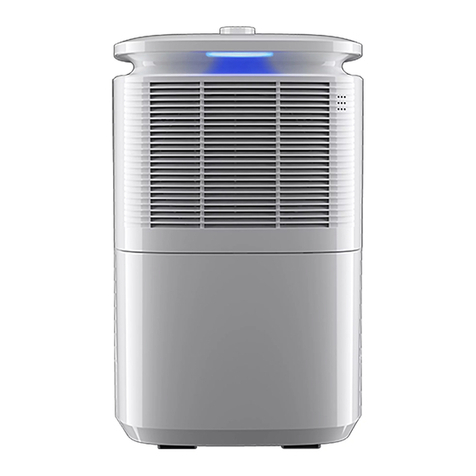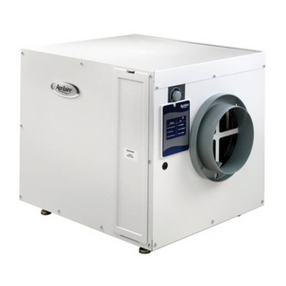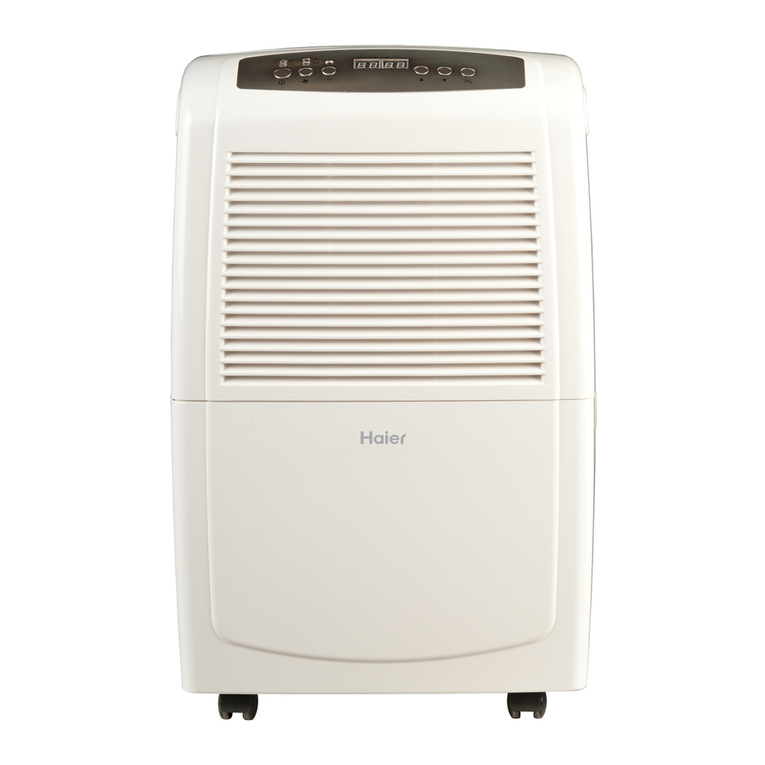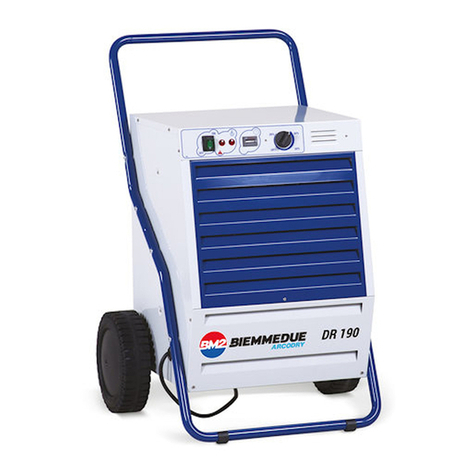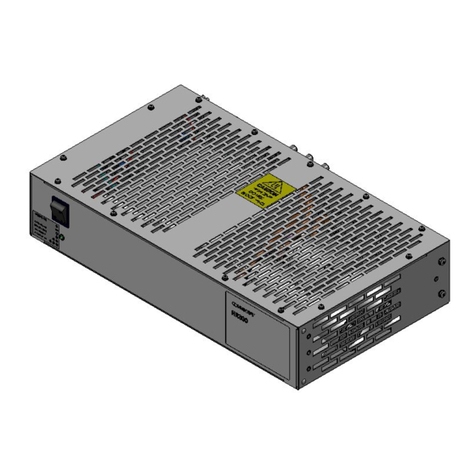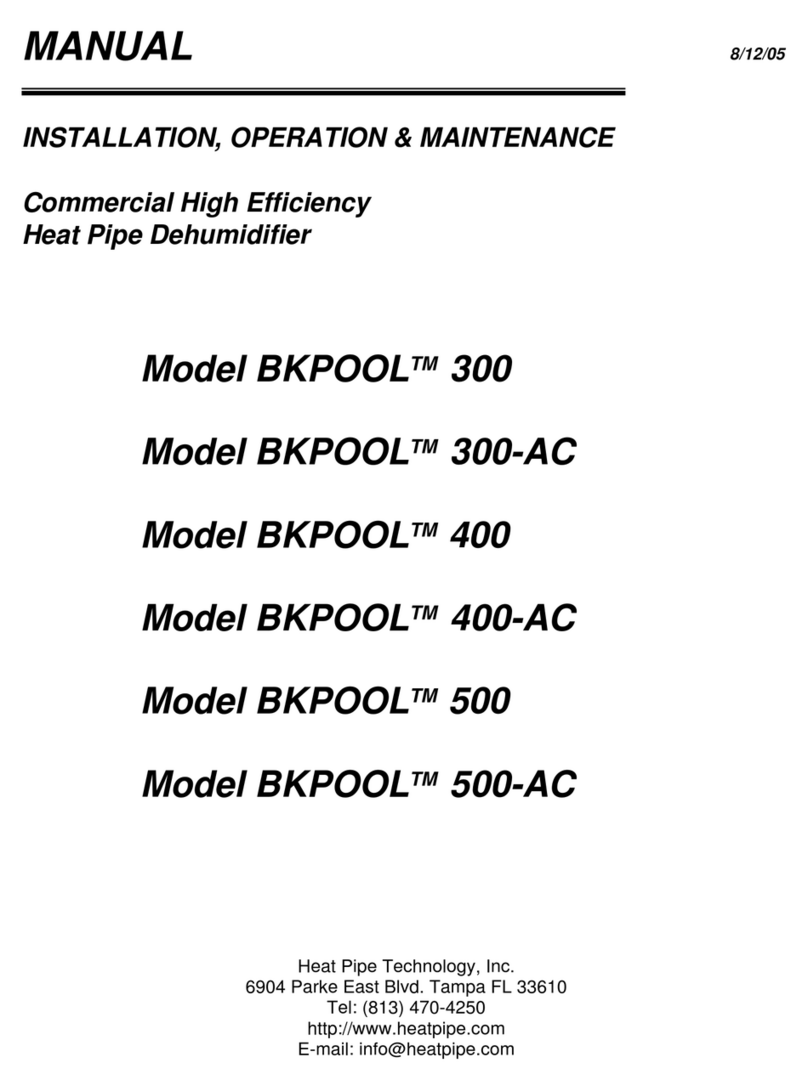SPX HPD Series User manual

HPD Series
Heated Purge Desiccant Compressed Air Dryer
FORM NO.: 3156023 REVISION: 07/2014 READ AND UNDERSTAND THIS MANUAL PRIOR TO OPERATING OR SERVICING THIS PRODUCT.
INSTRUCTION MANUAL
MODELS RATED
FLOW
MODEL
REFERENCE
HPD300
HPD400
HPD500
HPD600
HPD750
300 SCFM
400 SCFM
500 SCFM
600 SCFM
750 SCFM
300
400
500
600
750
HPD900
HPD1050
HPD1300
HPD1500
HPD1800
900 SCFM
1050 SCFM
1300 SCFM
1500 SCFM
1800 SCFM
900
1050
1300
1500
1800
HPD2200
HPD2600
HPD3200
2200 SCFM
2600 SCFM
3200 SCFM
2200
2600
3200

Contents
1.0 General Safety Information ........................... 1
2.0 Receiving, Storing, and Moving..................... 1
3.0 Description .................................................... 2
4.0 Installation ..................................................... 2
5.0 Instrumentation.............................................. 7
6.0 Operation....................................................... 10
7.0 Maintenance.................................................. 26
8.0 Troubleshooting............................................. 28
9.0 Purge Information.......................................... 31
DRAWINGS
P&ID Schematic - Models 300 through 600 .......... 32
P&ID Schematic - Models 750 through 3200 ........ 34
Electrical Schematic – 460VAC, 3 phase .............. 36
Electrical Schematic – 575VAC, 3 phase .............. 37
REPLACEMENT PARTS
Models 300 through 600........................................ 38
Models 750 through 1800...................................... 40
Models 2200 through 3200.................................... 42
WARRANTY .......................................................... 45

1
1.0 General Safety Information
This equipment is designed and built with safety as a prime
consideration; industry-accepted safety factors have been
used in the design. Each dryer is checked at the factory for
safety and operation. All pressure vessels which fall under
the scope of ASME Section VIII, are hydrostatically tested
in accordance with the latest addenda. A factory-installed
safety relief valve is standard on each dryer.
WARNING — The following safety rules must be
observed to ensure safe dryer operation. Failure to
follow these rules may void the warranty or result in
dryer damage or personal injury.
1. Never install or try to repair any dryer that has been
damaged in shipment. See the Receiving and In-
spection instructions in this manual for appropriate
action.
2. This equipment is a pressure-containing device.
Never operate the dryer at pressures or temperatures
above the maximum conditions shown on the data
plate.
Never dismantle or work on any component of the
dryer or compressed air system under pressure. Vent
internal air pressure to the atmosphere before servic-
ing.
3. This equipment requires electricity to operate. Install
equipment in compliance with national and local elec-
trical codes. Standard equipment is supplied with
NEMA 4,4X electrical enclosures and is not intended
for installation in hazardous environments.
Never perform electrical service on the dryer unless
the main power supply has been disconnected. Parts
of the control circuit may remain energized when the
power switch is turned off.
4. Air treated by this equipment may not be suitable for
breathing without further purication. Refer to OSHA
standard 1910.134 for the requirements for breathing
quality air.
5. Certain parts of the dryer are not insulated and may
become hot during normal operation of the dryer. Do
not touch any of these areas without rst determining
the surface temperature.
6. Use only genuine replacement parts from the manu-
facturer. The manufacturer bears no responsibility for
hazards caused by the use of unauthorized parts.
Safety instructions in this manual are boldfaced for
emphasis. The signal words DANGER, WARNING and
CAUTION are used to indicate hazard seriousness levels
as follows:
DANGER—Immediate hazard which will result in severe
injury or death.
WARNING—Hazard or unsafe practice which could result
in severe injury or death.
CAUTION—Hazard or unsafe practice which could result
in minor injury or in product or property damage.
The dryer data plate, attached to the electrical control box,
contains critical safety and identication information. If the
data plate is missing or defaced, immediately contact your
local distributor for a replacement.
2.0 Receiving, Storing, and Moving
2.1 Receiving and Inspection
This shipment has been thoroughly checked, packed and
inspected before leaving our plant. It was received in good
condition by the carrier and was so acknowledged.
Immediately upon receipt, thoroughly inspect for visible
loss or damage that may have occurred during shipping.
If this shipment shows evidence of loss or damage at
time of delivery to you, insist that a notation of this loss or
damage be made on the delivery receipt by the carrier’s
agent. Otherwise no claim can be enforced against the
carrier.
Also check for concealed loss or damage. When a ship-
ment has been delivered to you in apparent good order,
but concealed damage is found upon unpacking, notify
the carrier immediately and insist on his agent inspecting
the shipment. The carrier will not consider any claim for
loss or damage unless an inspection has been made. If
you give the carrier a clear receipt for goods that have
been damaged or lost in transit, you do so at your own
risk and expense. Concealed damage claims are not our
responsibility as our terms are F.O.B. point of shipment.
Shipping damage is not covered by the dryer warranty.
2.2 Storing
Store the dryer indoors to prevent damage to any electrical
or mechanical components. All packaging material should
be left in place until the dryer is in position.
2.3 Handling
The dryer is designed to be moved by means of the ship-
ping skid or the base channels. The dryer may also have
lifting lugs for use with an overhead crane. Be sure to
attach all of the lift points and use appropriate spreader
bars to prevent damage to the dryer.
CAUTION — Never lift the dryer by attaching hooks
or slings to the piping, or to any part other than the
lifting lugs. severe structural damage could occur.

2
3.0 Description
3.1 Function
Externally Heated Purge Air dryers are an economical
and reliable way to dry compressed air to dew points
below the freezing point of water. Desiccant dryers lower
the dew point of compressed air by adsorbing the water
vapor present in the compressed air onto the surface of
the desiccant. Adsorption continues until equilibrium is
reached between the partial pressure of the water vapor
in the air and that on the surface of the desiccant.
These dryers continuously dry compressed air by using
two identical towers, each containing a desiccant bed.
While one tower is on-stream drying, the other tower is
off-stream being regenerated (reactivated, i.e. dried out).
The towers are alternated on- and off-stream so that dry
desiccant is always in contact with the wet compressed
air. In this way a continuous supply of dry air downstream
of the dryer is possible. The switching from one tower
to the other is controlled by a solid-state controller on
either a xed time basis (standard) or a demand basis
(optional).
1. Fixed Cycle Regeneration (Standard)
When a tower is placed off-line, it is slowly depressur-
ized and the desiccant is regenerated by driving off
(desorbing) the water collected on its surface. Regen-
eration is accomplished by expanding a portion of the
dried air to atmospheric pressure. This extremely dry
air (purge air) is then passed through a heater. This
heated air ows through the desiccant bed, desorbs
the moisture from the desiccant, and carries the de-
sorbed water out of the dryer. The heater is turned
off when the Heat Saver temperature sensor detects
bed heating is complete. The purge air continues to
ow through the off-stream tower, cooling the desic-
cant bed and reducing the dew point spike after tower
change over. The tower is then repressurized to full
line pressure. This prevents desiccant bed movement
and downstream pressure loss when the tower goes
back on-line.
2. Optional Demand Cycle Regeneration
(With Venturi Blower)
When a tower is placed off-line, it is slowly depres-
surized and the desiccant is regenerated by driving
off (desorbing) the water collected on its surface. Re-
generation is accomplished by expanding a portion of
the dried air to atmospheric pressure through a venturi
blower. The venturi blower also draws ambient air into
the purge line. This combination of purge and ambient
air is then passed through a heater. This heated air
ows through the desiccant bed, desorbs the moisture
from the desiccant, and carries the desorbed water
out of the dryer. The heater and venturi suction valve
are turned off when the Heat Saver temperature sen-
sor detects bed heating is complete. Dry purge air
continues to ow through the off-stream tower, cooling
the desiccant bed and reducing the dew point spike
after tower change over. The tower is then repres-
surized to full line pressure. This prevents desiccant
bed movement and downstream pressure loss when
the tower goes back on-line.
4.0 Installation
4.1 System Arrangement
Install the dryer downstream of an aftercooler, separator,
receiver, and high-efciency oil-removing lter(s) so that
the dryer inlet air is between 40°F (4.4°C) and 120°F
(49°C) and contains no liquid water or oil. Liquid water
and/or inlet air temperatures above 100°F (37.8°C) can
reduce drying capacity. Contact your local distributor for
information on proper dryer sizing at elevated inlet air
temperatures.
Adequate ltration is required upstream of the dryer in
order to protect the desiccant bed from liquid and solid
contamination. Use an Air Line Filter in systems supplied
by a non-lubricated (oil-free) air compressor. In systems
supplied by a lubricated air compressor, use a High Ef-
ciency Oil Removal Filter. A coarser lter will be required
upstream of the Oil Removal Filter if heavy liquid or solid
loads are present.
To ensure downstream air purity (prevent desiccant dust
from traveling downstream) adequate ltration downstream
of the dryer is required. A High Temperature Afterlter,
typically rated at 450°F (232°C) operating temperature
and capable of removing all desiccant nes 1 micron and
larger should be installed at the dryer outlet.
DANGER — This dryer must be tted with a high
efciency coalescing lter and liquid drainer that is
maintained properly. Failure to do so could result
in an in-line re.
WARNING — The afterlter, if installed, must be rated
for 450°F (232°C).
4.2 Ambient Air Temperature
Locate the dryer under cover in an area where the ambi-
ent air temperature will remain between 35°F (2°C) and
120°F (49°C).
NOTE: If dryer is installed in ambients below 35°F (2°C),
low ambient protection requiring heat tracing and insula-
tion of the prelter bowls, auto drains and/or sumps, and
lower piping with inlet switching and purge/repressurization
valves is necessary to prevent condensate from freezing.
If installing heat tracing, observe electrical class code
requirements for type of duty specied. Purge mufers
and their relief mechanisms must be kept clear from snow
and ice buildup that could prevent proper discharge of
compressed air.

3
4.3 Location and Clearance
Install the dryer on a level pad. Ensure the dryer is level
by grouting or shimming as necessary. Holes are provided
in the dryer base members for oor anchors. Securely
anchor the dryer frame to the oor. Allow 24 inches clear-
ance on all sides of the dryer for servicing. Provide ad-
equate clearance for prelter element, afterlter element
and heater element replacement. Provide protection for
the dryer if it is installed where heavy vehicles or similar
portable equipment is likely to cause damage.
4.4 Piping and Connections
All external piping must be supplied by the user unless
otherwise specied. Refer to Figures 2 for connection
sizes. Inlet and outlet isolation valves and a vent valve
are recommended so the dryer can be isolated and
depressurized for servicing. The connections and pipe
ttings must be rated for or exceed the maximum operat-
ing pressure given on the dryer nameplate and must be in
accordance with industry-wide codes. Be sure all piping is
supported. Do not allow the weight of any piping to bear
on the dryer or lters. Piping should be the same size as
or larger than the dryer connection. Piping smaller than
the dryer connections will cause high pressure drop and
reduce drying capacity.
If the purge exhaust piping must be extended outside the
dryer area, choose a combination of diameters, lengths,
and turns that limits the additional pressure drop to 1/4
psid or less. BACK PRESSURE WILL CAUSE DRYER
MALFUNCTION. Consult the factory for piping details
if required.
WARNING — Do not operate dryer without installed
mufflers. Exhausting compressed air directly to
atmosphere will result in noise levels above OSHA
permissible levels and rapidly expanding gas could
potentially cause harm to persons or property.
Dryer bypass piping may be installed to allow uninter-
rupted airow during servicing. If the downstream appli-
cation cannot tolerate unprocessed air for short periods,
install a second dryer in the bypass line.
Compressor Aftercooler Separator Receiver Prefilters Afterfilters ReceiverDesiccant Dryer
Figure 1
Typical System Conguration
CAUTION — Do not hydrostatically test the piping
with the dryer in the system. The desiccant will be
damaged if saturated with water.
4.5 Electrical Connections
WARNING — These procedures require entering
gaining access to the dryer’s electrical enclosure(s).
All electrical work must be performed by a qualied
electrical technician.
Connect the proper power supply to the dryer according
to the electrical drawings which accompany this manual.
Be sure to follow all applicable electrical codes.
NOTE: A disconnect switch is not provided as standard
equipment and therefore, must be supplied by the cus-
tomer.
Dry contacts (voltage free) are provided in the low ten-
sion electrical enclosure for a remote alarm. The contact
ratings are shown on the electrical drawing.
Connections to voltage-free common alarm contacts with
a minimum 5-amp rating can be made at terminals TB4-1
through 3.
• Terminal TB4-3 is the common alarm connection.
• Terminal TB4-1 is the N.O.. (normally open) contact
connection.
• Terminal TB4-2 is the N.C. (normally closed) contact
connection.
• The alarm relay coil is energized when power is sup-
plied to the controller input terminals and there is no
alarms.
• The coil is de-energized when power is removed or
when an alarm condition exists.
• The common alarm is designed to activate on:
a) either a dryer fault condition or a service reminder,
or b) a dryer fault condition. This is user selectable.
• For the common alarm to activate on either a dryer
fault condition or a service reminder, the jumper at
JP6 is removed. This is the default conguration.

4
CENTERLINE OF
CUSTOMER
INLET/OUTLET
CONNECTIONS
E
(MAX)
F
G
C
D
B
A
(MAX)
TOP VIEW
R
SLOT
(TYP 4 PLACES)
K
N
(MAX)
P
SIDE VIEW
(RIGHT CHAMBER REMOVED FOR CLARITY)
L
S
GAS INLET
M
T
GAS OUTLET
CENTERLINE OF
CUSTOMER DRY GAS
OUTLET CONNECTION
H
CENTERLINE OF
CUSTOMER WET GAS
INLET CONNECTION
E
(MAX)
F
G
C
D
B
TOP VIEW
A
(MAX)
R
SLOT
(TYP 4 PLACES)
K
N
(MAX)
SIDE VIEW
(RIGHT CHAMBER REMOVED FOR CLARITY)
P
L
S
GAS INLET
M
T
GAS OUTLET CONNECTION
TOP VIEW
R
SLOT
(TYP 4 PLACES)
CENTERLINE OF
CUSTOMER DRY GAS
OUTLET CONNECTION
H
CENTERLINE OF
CUSTOMER WET GAS
INLET CONNECTION
E
(MAX)
F
G
C
D
A
MAX
B
K
N
(MAX)
P
SIDE VIEW
(RIGHT CHAMBER REMOVED FOR CLARITY)
L
S
GAS INLET
M
T
GAS OUTLET
Dimensions and Connections – Dryer Only
Figure 2 (continued on next page)
(For construction purposes, contact factory to request certied drawings when mounted lters are included with order)
VIEW I
300 through 600 scfm
VIEW II
750 through 1800 scfm
VIEW III
2200 through 3200 scfm

5
Dimensions and Connections
Figure 2 (continued from previous page)
DIMENSIONS IN INCHES
MODEL 300 400 500 600 750 900 1050 1300 1500 1800 2200 2600 3200
VIEW REF. I I I I II II II II II II III III III
A 48 53 53 55 60 60 64 66 80 80 85 85 85
B 39.11/16 46.3/4 46.3/4 47.9/16 52.11/16 52.11/16 56.7/16 57.5/16 69.13/16 69.13/16 73.3/8 73.3/8 82.7/8
C 1.1/4 1.1/4 1.1/4 1.1/4 1.1/4 1.1/4 1.1/4 1.1/4 1.1/4 1.1/4 1.1/4 1.1/4 1.1/4
D 19.7/8 23.3/8 23.3/8 23.13/16 26.5/8 26.5/8 29.9/16 30 34.7/8 34.7/8 38.9/16 38.9/16 46.5/16
E 46 52 52 53 59 59 62 63 66 66 73 73 82
F 39.1/2 45.1/2 45.1/2 45.1/2 53.1/2 53.1/2 53.1/2 53.1/2 53.1/2 53.1/2 59.1/2 59.1/2 59.1/2
G 19.3/4 22.3/4 22.3/4 22.3/4 26.3/4 26.3/4 26.3/4 26.3/4 26.3/4 26.3/4 29.3/4 29.3/4 29.3/4
H — — — — 1.1/4 1.1/4 3.1/4 3.1/4 5.15/16 5.15/16 4.3/8 4.3/8 10.1/2
K 2.7/16 2.7/16 3 3 8 8 8 8 8 8 7.1/4 7.1/4 7.1/4
L 10.13/16 12 12.11/16 13.3/16 13.7/16 13.7/16 13.3/16 13.3/16 15.5/8 15.5/8 17.1/4 17.1/4 17
M 90.1/4 96.15/16 96.15/16 100.7/16 100.11/16 100.11/16 99.13/16 104.13/16 101.7/8 101.7/8 115.7/8 115.7/8 113.3/8
N 98 104 105 108 114 114 113 118 116 116 128 128 125
P 11.3/8 13.3/16 13.3/16 14.3/16 15.3/4 15.3/4 16.3/4 17.3/4 20.3/4 20.3/4 22.1/4 22.1/4 26.1/2
R 7/8 X 1.1/4 7/8 X 1.1/4 7/8 X 1.1/4 7/8 X 1.1/4 7/8 X 1.1/4 7/8 X 1.1/4 7/8 X 1.1/4 7/8 X 1.1/4 7/8 X 1.1/4 7/8 X 1.1/4 7/8 X 1.1/4 7/8 X 1.1/4 7/8 X 1.1/4
S 1.1/2 NPT 1.1/2 NPT 2 NPT 2 NPT 3 FLANGE 3 FLANGE 3 FLANGE 3 FLANGE 3 FLANGE 3 FLANGE 4 FLANGE 4 FLANGE 4 FLANGE
T 1.1/2 NPT 1.1/2 NPT 2 NPT 2 NPT 3 FLANGE 3 FLANGE 3 FLANGE 3 FLANGE 3 FLANGE 3 FLANGE 4 FLANGE 4 FLANGE 4 FLANGE
WT/LBS 1,360 1,776 1,776 1,978 2,323 2,339 2,816 3,326 5,094 5,094 7,753 7,753 8,963
DIMENSIONS IN INCHES
MODEL 300 400 500 600 750 900 1050 1300 1500 1800 2200 2600 3200
VIEW REF. I I I I II II II II II II III III III
A 1207 1346 1346 1397 1524 1524 1626 1676 2032 2032 2159 2159 2159
B 1008 1187 1187 1208 1338 1338 1434 1456 1773 1773 1864 1864 2106
C 32 32 32 32 32 32 32 32 32 32 32 32 32
D 504 594 594 604 677 677 750 761 886 886 980 980 1177
E 1164 1315 1315 1340 1503 1503 1580 1605 1682 1682 1855 1855 2090
F 1003 1156 1156 1156 1359 1359 1359 1359 1359 1359 1511 1511 1511
G 502 578 578 578 679 679 679 679 679 679 756 756 756
H — — — — 32 32 83 83 151 151 111 111 267
K 62 62 76 76 203 203 203 203 203 203 184 184 184
L 274 305 322 335 341 341 335 335 397 397 438 438 432
M 2293 2462 2462 2551 2557 2557 2535 2662 2588 2588 2943 2943 2880
N 2480 2649 2664 2753 2903 2903 2870 2997 2946 2946 3246 3246 3183
P 289 335 335 360 400 400 425 451 527 527 565 565 673
R 22 X 32 22 X 32 22 X 32 22 X 32 22 X 32 22 X 32 22 X 32 22 X 32 22 X 32 22 X 32 22 X 32 22 X 32 22 X 32
S 1.1/2 NPT 1.1/2 NPT 2 NPT 2 NPT 3 FLANGE 3 FLANGE 3 FLANGE 3 FLANGE 3 FLANGE 3 FLANGE 4 FLANGE 4 FLANGE 4 FLANGE
T 1.1/2 NPT 1.1/2 NPT 2 NPT 2 NPT 3 FLANGE 3 FLANGE 3 FLANGE 3 FLANGE 3 FLANGE 3 FLANGE 4 FLANGE 4 FLANGE 4 FLANGE
WT/KGS 617 806 806 897 1,054 1,061 1,277 1,509 2,311 2,311 3,517 3,517 4,086

6
• To have the common alarm activate on a dryer fault
condition only, the jumper at JP6 is installed.
NOTE:
Before turning high voltage on to the dryer, an
ohmic test should be performed on the heater elements
to insure they are dry before proceeding with start-up.
This should be done after extended shut downs and long
delays between delivery and start-up. Connect one lead
of a megger to an unpainted surface of the control panel
or dryer frame. Connect the other lead to each phase on
the load side of the contactor. Adjust the megger to the
1500 volt setting. Perform the ohmic test on each zone
of the heaters. A minimum value of 500k ohms must be
obtained.
CAUTION - Failure to ohmic test heaters after ex-
tended periods may cause heater failure.
4.5.1 RS-232 Connections
RS-232 connections can be made at the 3-pin connector
labeled J3 and located at the upper left-handed corner
of the control board. A cable for this connection can be
purchased through your distributor.
4.6 Initial Desiccant Charge
Externally Heated Purge Air dryers use activated alumina
as the desiccant in the dryer towers.
Models 300 through 1050 are shipped with activated alu-
mina (1/8” bead) in the dryer towers. Desiccant is shipped
loose with all other standard models.
All desiccant shipped loose must be added to the
dryer towers before the dryer is put into service
Refer to TABLE 1, DESICCANT REQUIREMENTS for
desiccant type and quantity per tower.
To Add Desiccant
WARNING — The following procedure provides
instructions for adding the initial desiccant to the
towers. If replacing desiccant, refer to the “Proce-
dure for Desiccant Charge Replacement” in the Dryer
Instruction Manual.
1. Verify pressure gauges of both towers indicate 0 psig.
If not, depressurize the towers according to the shut-
down instructions in the Dryer Instruction Manual.
2. Remove the pipe plug or ll port ange cover (where
applicable) from the desiccant ll port at the top of
each tower. Refer to Figures 3 and 3a for the ll port
location.
CAUTION – Pouring desiccant creates a ne dust;
safety goggles, gloves and a dust mask should be
worn by personnel installing desiccant. Refer to the
Material Safety Data Sheet that accompanies desic-
cant shipped loose for more complete information.
CAUTION – Do not tamp the desiccant in the towers.
Tamping damages desiccant and causes dusting.
3. Refer to Table 1 for desiccant quantity per tower.
When using Table 1 you will nd the desiccant quanti-
ties listed in layers. Each layer will vary in depth due
to the type, quantity and purpose of the desiccant.
Layer 1 must be installed rst at the bottom of the
tower followed by layer number 2 etc., until the com-
plete charge of desiccant has been installed.
4. Utilizing an appropriate sized funnel, ll each desic-
cant tower as follows:
a. Install the required quantity of activated alumina
in layer 1 of each tower.
b. Level layer 1 and each subsequent layer of desic-
cant as added to each tower.
c. Finish lling each tower with desiccant until all
desiccant has been installed. LIGHT tapping
on the tower sides with a soft-face mallet should
yield additional free space to allow installation of
all desiccant required. DO NOT TAMP OR RAM
DESICCANT.
5. Clean the ll port closure. Replace the ll plug using
Teon tape or another pipe thread sealant suitable
for compressed air service. Reinstall ll port ange
cover (where applicable) in each desiccant tower.
TABLE 1
DESICCANT REQUIREMENTS
(Quantity per Tower)
Model Layer #1 Layer #2
(lbs.) (p/n) (lbs.) (p/n)
300 210 AA-4 — —
400 354 AA-4 — —
500 354 AA-4 — —
600 453 AA-4 — —
750 590 AA-4 — —
900 590 AA-4 — —
1050 710 AA-4 — —
1300 48 AA-25 876 AA-4
1500 92 AA-25 1167 AA-4
1800 92 AA-25 1167 AA-4
2200 161 AA-25 1706 AA-4
2600 161 AA-25 1706 AA-4
3200 258 AA-25 2119 AA-4
AA = Activated Alumina

7
5.0 Instrumentation
The following instrumentation helps in monitoring dryer
operation and performance. Instruments which are avail-
able as options are so noted.
Externally Heated Purge Air dryers are rated NEMA 4 and
include the following:
• Solid State Controls
• Chamber Pressure Gauges
• Purge Flow Pressure Gauge
• Switch Failure Alarm
• Purge Save Module (Option A)
• Energy Management (Option A)
• Dew Point Transmitter (Option B)
5.1 Controls
The solid-state dryer controls are located in a polycarbon-
ate, NEMA Class 4/4X, IP66 rated electrical enclosure
mounted to a center panel located between the two desic-
cant towers. Control features include:
• 15 LED’s to indicate operating status and fault condi-
tions.
• Two line text display to provide status and diagnostic
messages.
• Upon power loss, dryer “fails safe” (inlet valve remains
in position). On power recovery, controller resumes
where power was lost.
5.2 Chamber Pressure Gauges
A gauge mounted on the gauge panel indicates which
chamber is on-stream and which is regenerating. The
gauge for the on-stream tower indicates operating pres-
sure; the gauge for the regenerating tower indicates
0 psig.
5.3 Purge Flow Pressure Gauge
A gauge mounted on the gauge panel of the dryer indicates
purge airow.
5.4 Valve Switch-Failure Alarm
Pressure sensors located on each chamber trigger an
alarm when the drying chambers are not in the correct
pressure state (for example: chamber does not depres-
surize at the completion of its drying cycle). The chamber
pressure switch should be closed on the on-stream cham-
ber and open on the regenerating chamber. If triggered,
the dryer control system will energize the red alarm LED
on the control panel and de-energize the common alarm
relay. The alarm automatically clears once the alarm
conditions are corrected.
5.5 Venturi Blower
This precision engineered venturi blower uses ambient air
to boost the bed regeneration ow-through capacity. It is
included with the Energy Management System.
5.6 Energy Management System
The optional Energy Management System (EMS) au-
tomatically adjusts dryer operation to compensate for
changes in operating conditions. Air samples are con-
tinuously taken from the on-stream tower and passed
over a moisture probe which senses both temperature
and relative humidity. The moisture content of the air
within the desiccant bed is then precisely determined.
The on-stream tower will not depressurize and regener-
ate until a predetermined set point has been reached.
This elimination of unnecessary regeneration reduces
energy consumption and extends dryer desiccant and
component life.
5.7 Dew Point Transmitter
This option monitors and displays outlet pressure dew
points and provides an alarm signal if the dew point
exceeds user-specied set point. Recommended cali-
bration interval is 12 months. Contact the service depart-
ment for details.
Operation – The dew point is measured at the dryer oper-
ating pressure and is displayed in the operator interface.
If the dew point is outside of the temperature range, the
display will indicate an over-range (high dew point) or un-
der-range (low dew point) condition. A defective sensor
assembly or an electronics malfunction could also cause
the transmitter to indicate under-range.

8
Figure 3
General Layout Drawing
(Models 300 through 600)
TOP VIEW
PURGE INLET
CHECK VALVE
ASME RELIEF VALVE
OUTLET CHECK VALVE
DESICCANT
FILL PORT
LEFT TOWER
PRESSURE GAUGE
PRESSURE REGULATOR
& PILOT AIR FILTER
DEWPOINTER
(OPTIONAL)
TOWER PURGE
EXHAUST MUFFLER
TOWER PURGE
EXHAUST VALV E
FRONT VIEW
DESICCANT
DRAIN PORT
TOWER
INSULATION
(OPTIONAL)
HIGH TENSION
ENCLOSURE
CONTROL
ENCLOSURE
RIGHT TOWER
PRESSURE GAUGE
PURGE
PRESSURE GAUGE
REAR VIEW
TOWER INLET
VALVE
ASME CODE TAG
HOT PIPE INSULATION
(OPTIONAL)
HEATER TEMP
THERMOCOUPLE
(CENTER END IN PIPE)
(OPPOSITE SIDE)
HEATER OVERTEMP RTD
PURGE ADJUSTING VALVE
(REMOVE HANDLE AFTER
INITIAL DRYER TEST)
PURGE SAVER
INTAKE FILTER
(OPTIONAL)
PURGE SAVER
INTAKE SHUT-OFF
VALVE (OPTIONAL)
PURGE SAVER
(OPTIONAL)
PURGE
HEATER WITH
INSULATION
LEFT TOWER RIGHT TOWER
AIR
INLET
AIR
INLET
TOWER
BLOW-DOWN
VALVE

9
Figure 3a
General Layout Drawing
(Models 750 through 3200)
FRONT VIEW
REAR VIEW
TOP VIEW
LEFT TOWER
PRESSURE GAUGE
PRESSURE REGULATOR
& PILOT AIR FILTER
OUTLET CHECK VALVE
DEWPOINTER
(OPTIONAL)
TOWER PURGE
EXHAUST VALVE
DESICCANT
FILL PORT
DESICCANT
DRAIN PORT
TOWER
INSULATION
(OPTIONAL)
PURGE
PRESSURE GAUGE
RIGHT TOWER
PRESSURE GAUGE
HIGH TENSION
ENCLOSURE
CONTROL
ENCLOSURE
ASME RELIEF VALVE
HOT PIPE INSULATION
(OPTIONAL)
PURGE INLET
CHECK VALVE
IN
VXD
TOWER INLET
VALVE
ASME CODE TAG
PURGE ADJUSTING VALVE
(REMOVE HANDLE AFTER
INITIAL DRYER TEST)
PURGE SAVER
(OPTIONAL)
PURGE
HEATER WITH
INSULATION
PURGE SAVER
INTAKE SHUT-OFF
VALVE (OPTIONAL)
PURGE SAVER
INTAKE FILTER
(OPTIONAL)
PURGE SHUT-OFF VALVE
HEATER TEMP
THERMOCOUPLE
(CENTER END IN PIPE)
(OPPOSITE SIDE)
HEATER OVERTEMP RTD
TOWER BLOW-
DOWN VALVE
TOWER
DEPRESS VALVE

10
6.0 Operation
6.1 Controls
A solid-state controller controls valve and heater opera-
tion, monitors all critical operating conditions, and indi-
cates operating status on a 2-line LCD display operator
interface. The controller receives input data from pres-
sure switches, temperature sensors and the operator
interface. The operator interface displays information
about the dryer operating status and is used to change
the dryer operating mode.
6.2 Operating Modes
6.2.1 Automatic and Manual Advance
The drying and regeneration cycles are divided into
discrete steps. The operator selects either one of the
automatic advance modes (Energy Management, Dew
Point Control, or Fixed Cycle) or manual advance mode
(Test Cycle) through the operator interface.
Selecting any of the automatic advance modes enables
a timer in the controller to advance the program step-by-
step according to the programmed schedule.
Setting up the controller for manual advance disables the
timer and the operator can advance the program one step
at a time. This mode is used for diagnostic purposes.
6.2.2 Fixed and Demand Cycle Operation
In Fixed Cycle operation, each tower is on-line (drying) for
a xed time period regardless of the operating conditions.
In demand cycle operation, a tower remains on-line until
the desiccant bed has been fully utilized. For lower than
designed moisture loads, this results in longer drying
cycles, longer time between regenerations and, therefore
lower energy consumption. Demand cycle operation is
an optional feature. The operator interface is used to
select the xed or demand cycle.
6.3 Operating Sequence Description
6.3.1 Fixed Cycle (Standard)
1. Left Tower Drying – Right Tower Regenerating
(See Figure 4)
At the start of the Left Tower Drying cycle, Left
Inlet Valve Aopens, Right Inlet Valve Bcloses to
isolate the two towers. Wet, compressed air ows
up through the left tower where it is dried. The dry
air exits the dryer through the Left Outlet Check
Valve.
Next, the Purge Supply Valve Eis closed and the
Right Purge Exhaust Valve Cis opened. The right
tower is slowly depressurized through an exhaust
mufer.
Next, Purge Supply Valve Eand Right Tower Purge
Exhaust Valve Dare opened, and the Heater is
turned on. The heated purge air ows through the
Right Purge Check Valve, down through the right
tower, and exits through the Right Tower Purge
Exhaust Valve D. The Heater is de-energized when
the Right Chamber temperature sensor detects
desiccant bed heating is complete. Purge ow will
continue to cool the right tower desiccant bed while
“recovered” bed heat strips additional moisture from
the desiccant.
Finally, the Right Tower Purge Exhaust Valve Dis
closed. The right tower slowly repressurizes to full
line pressure and is ready to go back on-line.
2. Right Tower Drying – Left Tower Regenerating
At the start of the Right Tower Drying cycle, Right Inlet
Valve Bopens, Left Inlet Valve Acloses to isolate the
two towers. Wet, compressed air ows up through
the right tower where it is dried. The dry air exits the
dryer through the Right Outlet Check Valve.
Next, the Purge Supply Valve Eis closed and the Left
Purge Exhaust Valve is opened. The left tower is
slowly depressurized through an exhaust mufer.
Next, Purge Supply Valve Eand Left Tower Purge
Exhaust Valve are opened, and the Heater is turned
on. The heated purge air ows through the Left
Purge Check Valve, down through the left tower, and
exits through the Left Tower Purge Exhaust Valve.
The Heater is de-energized when the Left Chamber
temperature sensor detects desiccant bed heating
is complete. Purge ow will continue to cool the left
tower desiccant bed while “recovered” bed heat strips
additional moisture from the desiccant.
Finally, the Left Tower Purge Exhaust Valve is closed.
The left tower slowly repressurizes to full line pres-
sure and is ready to go back on-line.
6.3.2 Demand Cycle (optional)
Operation of the demand cycle is identical to the xed
cycle except the cycle is extended until the desiccant bed
in the on-line tower has been fully utilized. The off-line
tower is regenerated and remains in a stand-by mode
after being repressurized.
1. Left Tower Drying – Right Tower Regenerating
(See Figure 5)
At the start of the Left Tower Drying cycle, Left
Inlet Valve Aopens, Right Inlet Valve Bcloses to
isolate the two towers. Wet, compressed air ows
up through the left tower where it is dried. The dry
air exits the dryer through the Left Outlet Check
Valve.
Next, the Purge Supply Valve Eis closed and the
Right Purge Exhaust Valve Cis opened. The right
tower is slowly depressurized through an exhaust
mufer.

11
Next, Purge Supply Valve Eand Right Tower Purge
Exhaust Valve Dare opened, and the Heater is
turned on. The Venturi Blower Intake Shutoff Valve
Fis opened. Purge air passes through the venturi
blower, drawing in ambient air, augmenting the purge
air ow before passing through the heater. The
heated purge air then ows through the Right Purge
Check Valve, down through the right tower, and exits
through the Right Tower Purge Exhaust Valve D. The
Heater operates until the bed temperature sensor
signals heating is complete. Venturi Blower Intake
Shutoff Valve F closes, dry purge ow provides par-
tial cooling while recovering heat to drive additional
moisture from the bed.
Finally, the Right Tower Purge Exhaust Valve Dis
closed. The right tower slowly repressurizes to full
line pressure and is ready to go back on-line.
2. Right Tower Drying – Left Tower Regenerating
At the start of the Right Tower Drying cycle, Right Inlet
Valve Bopens, Left Inlet Valve Acloses to isolate the
two towers. Wet, compressed air ows up through
the right tower where it is dried. The dry air exits the
dryer through the Right Outlet Check Valve.
Next, the Purge Supply Valve Eis closed and the Left
Purge Exhaust Valve is opened. The left tower is
slowly depressurized through an exhaust mufer.
Next, Purge Supply Valve Eand Left Tower Purge
Exhaust Valve are opened, and the Heater is turned
on. The Venturi Blower Intake Shutoff Valve Fis
opened. Purge air passes through the venturi blower,
drawing in ambient air, augmenting the purge air ow
before passing through the heater. The heated purge
air then ows through the Right Purge Check Valve,
down through the right tower, and exits through the
Right Tower Purge Exhaust Valve D. The Heater
operates until the bed temperature sensor signals
heating is complete. Venturi Blower Intake Shutoff
Valve F closes, dry purge ow provides partial cool-
ing while recovering heat to drive additional moisture
from the bed.
Finally, the Left Tower Purge Exhaust Valve is closed.
The left tower slowly repressurizes to full line pres-
sure and is ready to go back on-line.
Figure 6 shows the air sampling system for the de-
mand cycle (Energy Management System – EMS)
option. A 3-way pilot valve directs an air sample
from the drying tower to the EMS sensor. The EMS
sensor detects the relative humidity and temperature
of the air sample. The air sample then exhausts to
atmosphere. The drying tower remains on-line until
the moisture front arrives at the sensor.
P
EMS
LEFT
TOWER
RIGHT
TOWER
Figure 6
Optional Moisture Sensing
Energy Management System (EMS)
Figure 4
Fixed Cycle Operation
Left Chamber Drying – Right Chamber Regenerating
Figure 5
Demand Cycle Operation with Venturi Blower
Left Chamber Drying – Right Chamber Regenerating

12
6.4 Control Board Jumpers
In the upper left hand corner of the control board there
are eight two-pin jumpers labeled JP1 through JP8. Only
six of the eight jumper pairs are utilized. Pairs JP7-JP8
are used for factory settings and testing. NOTE: Do
not install jumpers in the ON position on pairs JP7
through JP8. The jumper is a removable bridge that is
used to make or break continuity between two pins that
form a pair. When installed in the ON position, the jumper
is place on both pins of the pair and continuity between
the pins is established. When installed in the OFF posi-
tion, the jumper is removed or stored on a single pin and
continuity is broken. Jumper functions are as follows:
1. JP1 – Dryer Type
Jumper JP1 is used to select the dryer type congu-
ration. It is installed in the OFF position for External
Heated dryer conguration.
2. JP2 – Energy Management
Jumper JP2 is installed in the ON position when
an Energy Management sensor is installed. It is
installed in the OFF position when no Energy Man-
agement sensor is installed.
3. JP3 – Dew Point Transmitter
Jumper JP3 is installed in the ON position when a
Dew Point Transmitter is installed. It is installed in
the OFF position when no Dew Point Transmitter is
installed.
NOTE: “Energy Management” can coexist with the
dew point transmitter option. Dryer control based
on the ENERGY MANAGEMENT or DEWPOINT
CONTROL is selected on Screen 1 of the Set Up
Mode.
If DEWPOINT CONTROL is not selected then the
dew point signal does not control the dryer cycle but
still serves a monitoring and alarm function.
4. JP4 – Cooling Cycle
Jumper JP4 is installed in the ON position to disable
the Cooling Cycle. It is installed in the OFF position
enable a Cooling Cycle.
NOTE: A Cooling Cycle is required on Externally
Heated Dryers.
5. JP5 – Switching Failure
Jumper JP5 is installed in the ON position to enable
Switching Failure. The jumper is installed in the OFF
position if Switching Failure is disabled.
6. JP6 – Common Alarm
Jumper JP6 is installed in the OFF position to en-
able both the dryer fault alarms and service alarms
to activate the common alarm. This is the default
conguration. Install jumper JP6 in the ON position
if the common alarm is to activated by a dryer fault
alarm only.
NOTE: Jumpers JP7 and JP8 are used by the fac-
tory during nal inspection to download language
text and to enable ‘factory’ set-up screens.
7. JP7 – Download Language Text
Jumper JP7 is factory installed in the OFF position
to disable Language Text download. The jumper is
installed in the ON position to allow for language text
download due to either language corrections or new
language installation.
8. JP8 – Set Up
Jumper JP8 is factory installed in the OFF position
to disable access to “factory” set up screens. The
jumper is installed in the ON position during nal
inspection at the factory to set controller to match
customer requirements.
6.5 Operator Interface
Refer to Figure 7 , Front Panel Overlay for information
regarding the location and function of the LEDs, switches,
and text display.
6.5.1 Front Panel LED’s
• Power On - green
• Alarm - red
• Service / Maintenance reminder - amber
• Filters (pre, after, and pilot) service / maintenance
reminders - amber
• Inlet switching and purge / repressurization valve sta-
tus (On = valve open; Off = valve closed) - green
• Left and right tower status (heating) - amber
• Left and right tower status (drying) - green
• Left and right tower pressure switch status (On =
switch closed; Off = switch open) - green
6.5.2 Front Panel Switches
The front panel contains four momentary-contact push-
button switches. Refer to Figure 7, Front Panel Overlay
for the appropriate icon associated with each switch.
Pushing on the overlay icon actuates the switch.
Data Display Switch
This switch is used to step through the display
screens.
Select Switch
This button is located to the left of the text display window.
Refer to the Front Panel Operation Section for additional
information.
ENTER Switch
This button is located to the right of the text display
window. Refer to the Front Panel Operation Section for
additional information.
Alarm Reset Switch
This button is normally used to reset an alarm or service
reminder. Refer to the Front Panel Operation Section
for additional information.

13
Left Tower Drying LED
Left Purge Valve LED
On=valve open
Off=valve closed
Left Inlet Valve LED
On=valve open
Off=valve closed
Left Tower
Heating LED
Filter Service /
Maintenance LED
Vacuum Fluorescent
Text Display
Select switch
Power On LED
Data Display Switch
Communications Icon
Filter Service /
Maintenance LED
Filter Service /
Maintenance LED
Right Tower Pressure
Switch LED:
On=Tower pressurized
Right Tower Drying LED
Right Purge Valve LED
On=valve open
Off=valve closed
Right Tower
Heating LED
Right Inlet Valve LED
On=valve open
Off=valve closed
Enter Switch
Maintenance / Service
Reminder LED
Alarm LED
Reset Switch for Alarm
Left Tower Pressure
Switch LED:
On=Tower Pressurized
RS232
Figure 7
Front Panel Overlay
6.5.3 Front Panel Operation
1. There are ve operating modes for the Heated Desic-
cant Dryer Control.
a. Program Mode
b. Setup Mode
c. Alarm & Service Mode
d. Display Mode
e. Test Mode
2. Each Mode is described below.
6.5.4 Program Mode
1. Press and hold and for 3 seconds to enter
Program Mode.
2. Program Mode is comprised of the screens that are
described below.
3. There are three (3) ways to exit Program Mode.
a. Press after making the selection in the nal
screen.
b. At any screen, press and hold for 3 seconds.
c. The controller automatically exits Program Mode
if no button is pressed within 60 seconds.
4. Upon exiting Program Mode the controller will switch
to Display Mode
Screen 1: Select the Language
ENGLISH
1. Press to scroll through the choices: ENGLISH,
FRANCAIS and ESPANOL.
2. When nished, press to save the selection and
move to the next screen.
Screen 2: Select the Service Level
SERVICE LEVEL
NORMAL
1. Press to toggle between NORMAL and SEVERE.
a. NORMAL Service Intervals are:
i. 4000 hours for lters
ii. 8000 hours for desiccant
iii. 8000 hours for valves

14
b. SEVERE Service Intervals are:
i. 2000 hours for lters
ii. 4000 hours for desiccant
iii. 4000 hours for valves
2. When nished, press to save the selection and
move to the next screen.
Screen 3: Reset the Timer for Filter Service
FILTER SERVICE
RESET? NO
1. Press to toggle between NO and YES.
2. When finished, press to acknowledge the
selection and move to next screen.
Screen 4: Reset the Timer for Desiccant Service
DESICCANT SERVICE
RESET? NO
1. Press to toggle between NO and YES.
2. When finished, press to acknowledge the
selection and move to next screen.
Screen 5: Reset the Timer for Valve Service
VALVE SERVICE
RESET? NO
1. Press to toggle between NO and YES.
2. When finished, press to acknowledge the
selection and move to next screen.
Screen 6: Set Alarm Point for the Dew Point
Sensor (Displayed only when JP3 “on”)
DEWPOINT ALARM
±XX°C ±XXX°F
XX MIN SW DELAY
1. Press to increment the setting to the desired
value.
a. Standard set point is
-20°C -4°F
.
b. The allowable range of values is from
-80°C -112°F
to
+10°C +50°F
in 5°C/9°F
increments.
2. When finished, press to acknowledge the
selection and scroll to the switchover delay set point
screen.
a. Standard set point is
60 MIN
.
b. The allowable range of values are
30 to 120 MIN
in 10 minute increments.
3. When finished, press to acknowledge the
selection and move to next screen. Exit Program
Mode when there are no more active screens to
display.
Screen 7: Set Point for Dew Point Demand Control
(Displayed only when JP3 “on”)
DPNT CNTL SETPT
±XX°C ±XXX°F
1. Press to increment the setting to the desired
value.
a. Standard set point is
-30°C -22°F
.
b. The allowable range of values is from
-80°C -112°F
to
+10°C +50°F
in 5°C/9°F
increments.
NOTE: Value must be set “drier” than Dew Point
Sensor Alarm Set Point (screen 6).
2. When finished, press to acknowledge the
selection and exit the Program Mode.
Screen 8: Set the Heat Termination Set Point
HEAT TERM SET-PT
XX°C XXX°F
1. Press to increment the setting to the desired
temperature value.
a. Refer to P&ID diagrams in the back of this manual
for Heat Termination set points (see set point
values for RTD1 and RTD2)
b. The allowable range of values are:
60° - 160°C 140° - 320°F
in 10°C increments.
2. When finished, press to acknowledge the
selection and move to next screen. Exit Program
Mode when there are no more active screens to
display.
Screen 9: Set the Sweep Termination Set Point
SWEEP TERM SET-PT
XX°C XXX°F
1. Press to increment the setting to the desired
temperature value.
The allowable range of values are:
48° - 60°C 118° - 150°F
in 2°C increments.
2. When finished, press to acknowledge the
selection and move to next screen. Exit Program
Mode when there are no more active screens to
display.
Screen 10: Set Points for Energy Management
(Displayed only when JP8 “on”)
ENRGY MGMT SETPT
XX%RH
XX MBAR .XXX PSI
1. Press to increment the setting to the desired
maximum RH value.
a. Standard set point is
60%RH
. The factory setting
should not require adjustment.

15
b. The allowable range of values are
20 to 80%RH
in 5% increments.
2. When nished, press to acknowledge the selec-
tion and scroll to the pressure set point screen.
3. Press to increment the setting to the desired
maximum vapor pressure value.
a. Standard set point for a -40°F dew point dryer is
16 MBAR (0.232 PSI)
.
NOTE: Standard set point for a -100°F dew point
dryer is
4 MBAR (0.058 PSI)
.
b. The allowable range of values is
3 to 34 MBAR (0.044 to 0.493 PSI)
in 1 MBAR incre-
ments.
4. When finished, press to acknowledge the
selection and move to next screen.
Screen 11: Set Points for High Humidity Alarm
(Displayed only when JP8 “on”)
HIGH HUMIDITY
XX%RH
XX MBAR .XXX PSI
XX MIN SW DELAY
1. Press to increment the setting to the desired
maximum RH value.
a. Standard set point is
75%RH
. The standard
setting should not require adjustment.
b. The allowable range of values are
20 TO 80%RH
in 5% increments.
NOTE: Must be set above Energy Management
Maximum RH Value Set Point (screen 9).
2. When nished, press to acknowledge the selec-
tion and scroll to the pressure set point screen.
3. Press to increment the setting to the desired
maximum vapor pressure value.
a. Standard set point for a -40°F dew point dryer is
24 MBAR (0.348 PSI)
.
NOTE: Standard set point for a -100°F dew point
dryer is
5 MBAR (0.073 PSI)
.
b. The allowable range of values is
3 to 34 MBAR (0.044 to 0.493 PSI)
in 1 MBAR incre-
ments.
NOTE: Must be set above Energy Management
Maximum Vapor Pressure Set Point (screen 9).
4. When finished, press to acknowledge the
selection and scroll to the switchover delay set point
screen.
a. Standard set point is
60 MIN.
.
b. The allowable range of values are
30 to 120 MIN
in 10 minute increments.
5. When finished, press to acknowledge the
selection and move to next screen. Exit Program
Mode when there are no more active screens to
display.
6.5.5 Setup Mode
1. Press and hold for 3 seconds to enter Setup
Mode.
2. Setup Mode is comprised of the screens that are
described below.
3. There are two ways to exit Setup Mode.
a. Press
after making the selection in Screen 1.
b. The controller automatically exits Setup Mode if
no button is pressed with 60 seconds.
4. One of two things will happen upon exiting Setup
Mode.
a. The controller will switch to Display Mode if
ENERGY MANAGEMNT, FIXED CYCLE or
DEWPOINT CONTROL is selected.
b. The controller will switch to Test Mode if TEST
CYCLE is selected.
Screen 1: Select the Cycle Type
CYCLE TYPE
ENERGY MANAGEMNT
1. Press to scroll through the choices:
a. ENERGY MANAGEMNT (displayed only when
JP2 is in the ON position)
b. DEWPOINT CONTROL (displayed only when JP3
is in the ON position)
c. FIXED CYCLE
d. TEST CYCLE
2. When nished, press to save the selection and
exit the Setup Mode.

16
6.5.6 Alarm & Service Mode
1. Alarm & Service Mode is active when the controller
is in Display Mode. It is not active in Program Mode,
Setup Mode, or Test Mode.
2. Local alarm consists of a blinking alarm LED and an
alarm message display.
3. Alarm messages have priority over Service
messages. Service messages have priority over
Display Messages.
4. After an alarm condition has been corrected, if:
a. Alarm is “self-clearing” then,
i. The alarm LED stops blinking (LED on); the
alarm message continues to be displayed.
ii. The alarm reset button must be depressed to
clear the alarm LED (LED off) and the alarm
message.
b. Alarm must be manually reset, then:
i. The alarm LED continues to blink and the
alarm message continues to be displayed.
ii. The alarm reset button must be depressed
to:
1. Clear the alarm LED (LED off)
2. Clear the alarm message and
3. Restart the dryer cycle.
5. When an alarm condition has not been corrected
and the “alarm reset” button is pressed, the alarm
will not clear except as follows:
a. The alarm conditions will clear for 5 seconds,
then reappear if the alarm condition persists, this
applies to the following alarms:
i. Heater: High Inlet Temperature.
ii. Heater: Low Temperature
iii. Humidity Sensor: High Humidity Alarm
iv. Humidity Sensor: Under-Range or Over-
Range Alarm
v. Dew Point Sensor: High Dew Point Alarm
vi. Dew Point Sensor: Under-Range or Over-
Range Alarm
6. There are three alarms for each tower that are trig-
gered by the tower pressure switches. These alarms
can occur in any operating mode (Test, Fixed, Energy
Management, or Dew Point Demand Cycle).
Following is a brief description of each alarm.
a. Left or Right tower, drying, low pressure
i. Pressure switch open during the drying
cycle.
b. Left or Right tower, regenerating, high pressure
i. Pressure switch closed while purge valve is
open (after an initial time delay)
c. Left or Right tower, regenerating, low pressure
i. Pressure switch open at the end of the
regenerating cycle.
d. On alarm condition, de-energize heat cycle,
stop cycle sequence, display local alarm and
de-energize common alarm relay.
e. Alarm is self-clearing.
7. Depressurization Failure (models 900 - 3200) -
Left Tower or Right Tower Regenerating High
Pressure Alarm
a. If pressure switch 3PS is open during the Heating
of Cooling Cycle, indicating pressure above the
factory setting (refer to Electrical Schematic
drawings at the back of this manual for set point),
an alarm is activated.
b. On alarm condition, the heater is de-energized,
the purge shut-off valve (Solenoid “E”) is closed,
the cycle sequence is stopped, a local alarm is
displayed and the common alarm relay is de-en-
ergized.
c. “Alarm Left Tower - Regenerating High Pressure”
will be displayed if regenerating the left tower.
“Alarm Right Tower - Regenerating High Pressure”
will be displayed if regenerating the right tower.
d. This alarm is self-clearing.
8. The dryer is equipped with RTD temperature sensors.
There are out of range alarms for each.
a. The standard left tower, right tower, and heater
RTDs (RTD1, RTD2, RTD3) are scaled from
-20°F(-28°C) to 890°F (477°C), “Out of Range”
conditions are as follows:
i. Over-range - temperature above 850°F
(454°C)
ii. Under-range - temperature below -20°F
(-28°C)
iii. NOTE: The controller will annunciate a
“Heater Overtemperature” alarm in lieu of an
“Over Range” alarm when the heater sensor
is disconnected.
b. The Energy Management RTD4 is scaled from
-20°F(-28°C) to 429°F(220°C), “Out of Range”
conditions are as follows:
i. Over-range - temperatures above 400°F
(204°C)
ii. Under-range - temperatures below -20°F
(-28°C)
c. On alarm condition, a local alarm is displayed and
the common alarm relay is de-energized.
d. Over-range and Under-range alarms are self-
clearing.

17
ALARM HEATER
OVER-TEMPERATURE
ALARM HEATER
LOW TEMPERATURE
ALARM LEFT TOWER
OUTLET DEW POINT
ALARM RIGHT TWR
OUTLET DEW POINT
ALARM LEFT TOWER
HIGH HUMIDITY
ALARM RIGHT TWR
HIGH HUMIDITY
ALARM ENRGY MGNT
UNDER-RANGE
ALARM ENRGY MGNT
OVER-RANGE
ALARM LEFT TOWER
DEW POINT
UNDER-RANGE
ALARM LEFT TOWER
DEW POINT
OVER-RANGE
ALARM RIGHT TWR
DEW POINT
UNDER-RANGE
ALARM RIGHT TWR
DEW POINT
OVER-RANGE
ALARM LEFT TOWER
TEMP UNDER-RANGE
ALARM LEFT TOWER
TEMP OVER-RANGE
ALARM RIGHT TWR
TEMP OVER-RANGE
ALARM RIGHT TWR
TEMP UNDER-RANGE
ALARM RIGHT TWR
DRYING
LOW PRESSURE
LEFT TOWER ALARMS RIGHT TOWER ALARMS OTHER ALARMS
ALARM COOLING
HEATER HIGH TEMP
ALARM MESSAGES
ALARM LEFT TOWER
DRYING
LOW PRESSURE
ALARM LEFT TOWER
REGENERATING
HIGH PRESSURE
ALARM RIGHT TWR
REGENERATING
HIGH PRESSURE
ALARM LEFT TOWER
REGENERATING
LOW PRESSURE
ALARM RIGHT TWR
REGENERATING
LOW PRESSURE

18
9. Heat Low Temperature
a. RTD3 is used to detect Heater Low
Temperature.
b. Alarm if the heater temperature is less than 250°F
(121°C) within 15 minutes after the Heat Cycle is
initiated (15 minute delay also applies after power
recovery).
c. On alarm condition, display local alarm and de-
energize common alarm relay.
d. This alarm is self-clearing.
10. Cooling Alarm - Heater High Temperature
a. RTD3 is used to detect Heater High
Temperature.
b. Alarm when heater temperature exceeds 250°F
(121°C) when the sequence is in the second
stage of the COOLING CYCLE (i.e. 30 minutes
after cooling starts.
c. On alarm condition, stop cycle sequence, display
local alarm and de-energize common alarm
relay.
d. This alarm must be manually reset.
11. Heater Over-Temperature
a. RTD3 is used to detect Heater Over-Tempera-
ture.
b. Alarms anytime that the Heater temperature
exceeds 650°F (343°C).
c. On alarm condition, de-energize heat cycle, stop
cycle sequence, display local alarm and de-ener-
gize common alarm relay.
d. This alarm must be manually reset.
Alarms for Optional Devices
12. Energy Management -
a. High Humidity Alarm:
i. Measured moisture level exceeds the air alarm
value entered through the Program Mode.
b. Humidity Sensor:
i. Under-range: RH% < -15%
ii. Over-range: RH% > 115%
c. RTD:
i. Over-range: Temperature above 448°F
(231°C)
ii. Under-range: Temperature below -20°F
(-28°C)
d. On alarm condition:
i. Local alarm is displayed and the common
alarm relay is de-energized.
ii. If the dryer is set up for Energy Management
Control, the dryer sequence continues, but
bypasses the “HOLD” step and proceeds to
tower switchover after 4 hours of drying.
iii. This alarm is self-clearing, at which time the
alarm LED stops blinking and control switches
back to Energy Management control.
13. Dew Point Sensor
a. High Dewpoint Alarm
i. The user enters an alarm value through the
Program Mode.
ii. If the measured dew point exceeds the
alarm value, the outlet dew point alarm is
indicated.
b. Under-range alarm - Dew point below -148°F
(-100°C)
c. Over-range alarm - Dew point greater than
+109°F (+43°C)
d. On alarm condition,
i. Local alarm is displayed and the common
alarm relay is de-energized.
ii. If dryer is set up for Dewpoint Control, the dryer
sequence continues, but bypasses the “HOLD”
step and proceeds to tower switchover after 4
hours of drying.
iii. This alarm is self-clearing, at which time the
alarm LED stops blinking and control switches
back to Dewpoint Control.
This manual suits for next models
13
Table of contents
Other SPX Dehumidifier manuals

SPX
SPX Pneumatic Products IBP500 User manual
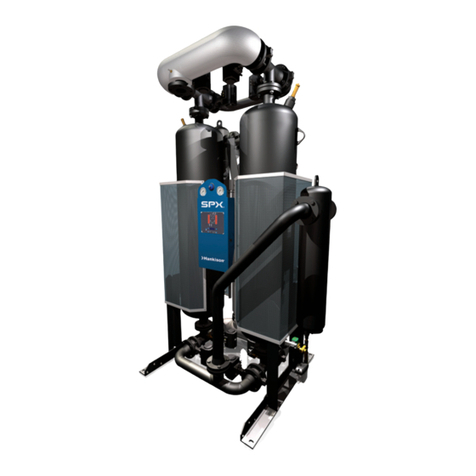
SPX
SPX HCD Series User manual
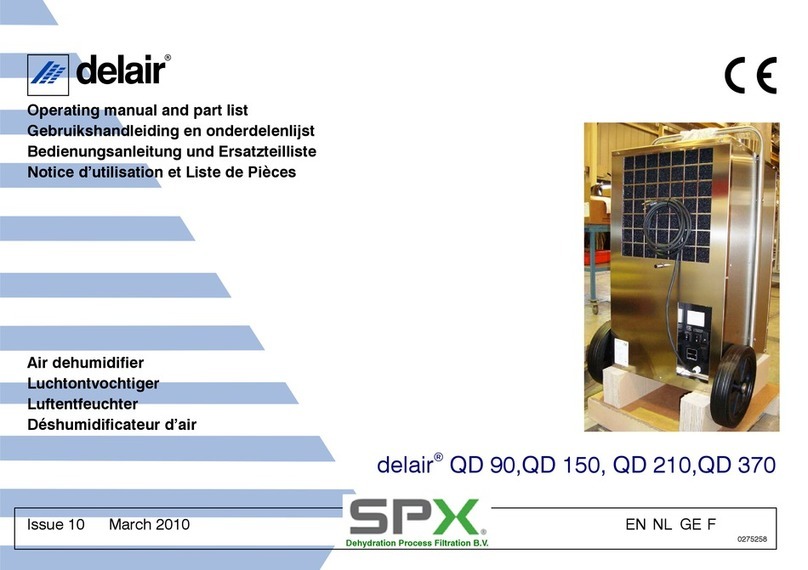
SPX
SPX DELAIR QD 90 User manual

SPX
SPX Hankison GCU Series User manual
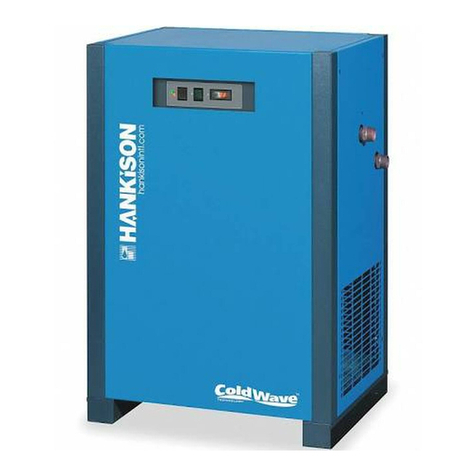
SPX
SPX Hankison HPRP Series User manual
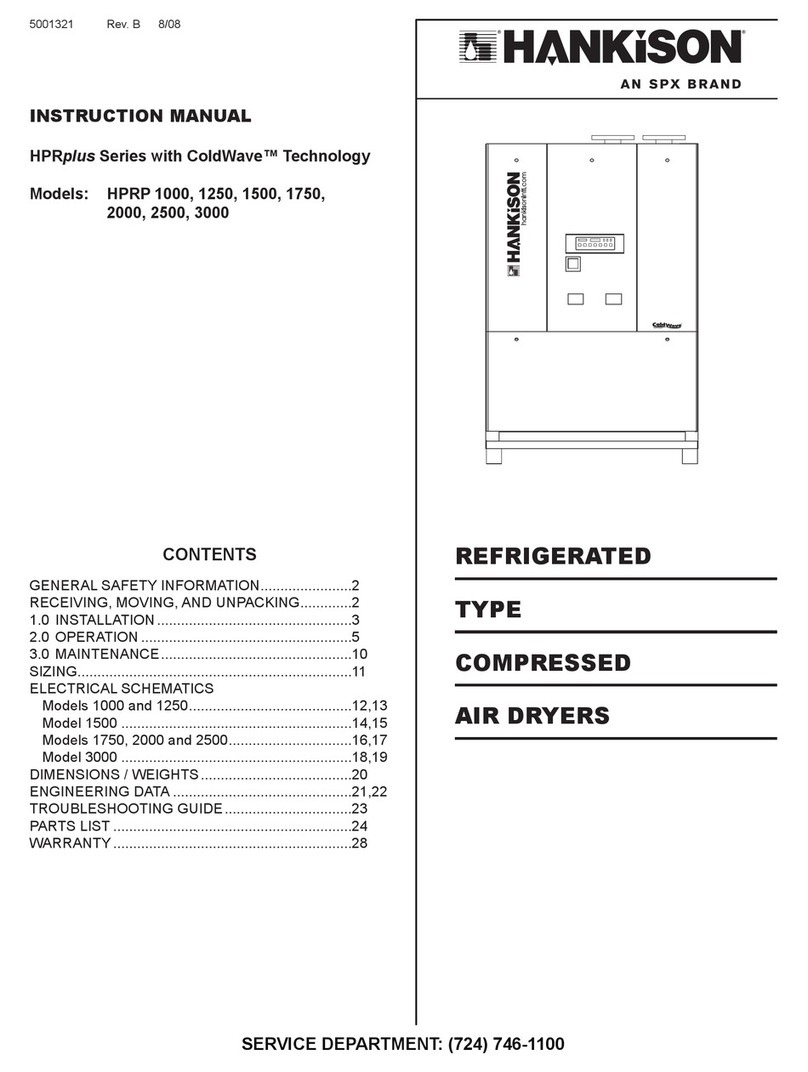
SPX
SPX Hankison HPRplus Series User manual
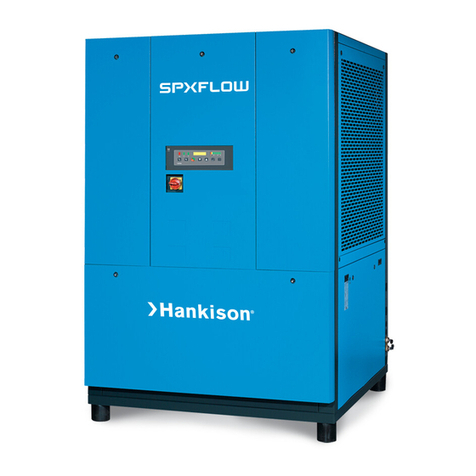
SPX
SPX HANKISON HES Series User manual
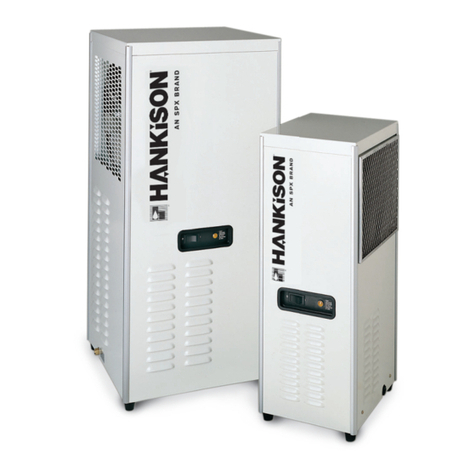
SPX
SPX HANKISON HIT Series User manual
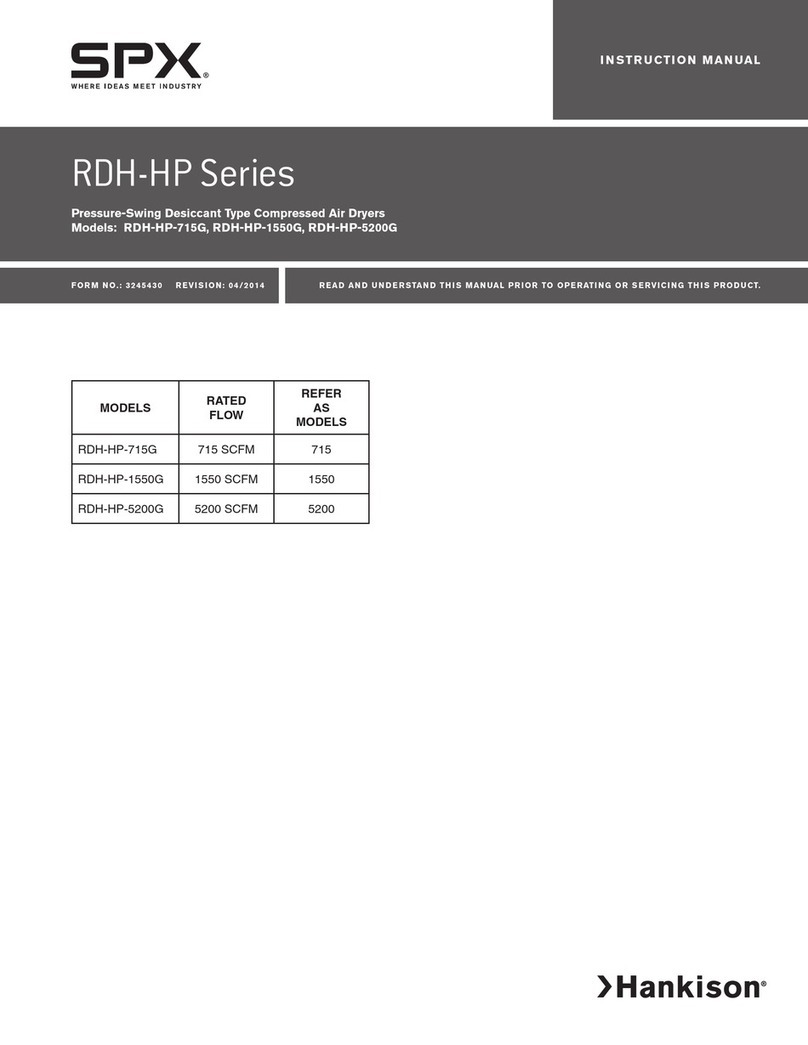
SPX
SPX RDH-HP Series User manual
